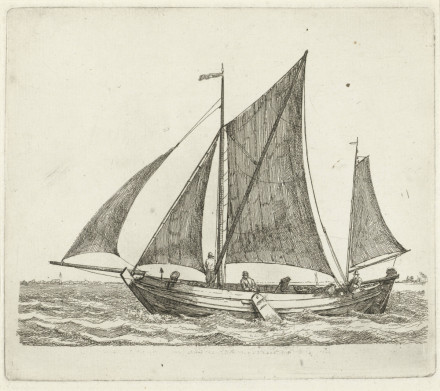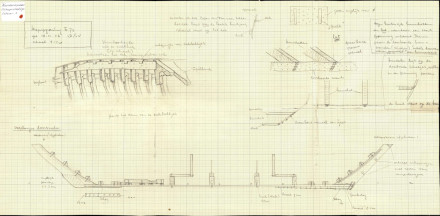History
In 1956 a report of a shipwreck was made near the present-day village of Creil on lot E72 in the Noordoostpolder region of the Netherlands. This region is a polder (land claimed from the sea or a lake by surrounding it with dikes and pumping it dry) that had only recently been established. The tenant thought he found a loose piece of wood that he could remove, but when he dug it out he found a complete ship. This find was followed up by a reconnaissance/excavation in the same year. It turned out to be the wreck of a small fishing vessel of the schokker type, with a maximum length of ca. 10 metres, a width of ca. 4 metres and a depth of 1,3 metres, which had ended up in the soil under a great angle. It turned out that a drainage pipe had been put in though the wreck before.
Description
Dimensions based on the excavation:
Lenght: ca. 10 metres
Width: ca. 4 metres
Depth: 1.3 metres

A fishing vessel of the schokker type, with fishing gear and three figures. Gerrit Groenewegen, 1791.
Status
The wreck was not deemed of a high importance and thus was not systematically excavated. Yet during the exploration, several dimensions were taken and in the ship a quite complete inventory was found, ranging from pottery and iron tools to several spoons and leather shoes. based on this, the date of the demise could be put in the first half of the 19th century, but after 1820, because of the presence of a lead sigil indicating the skipper had paid toll fees for the tidal inlet of Ameland from that year. Another remarkable find was an engraved tobacco case and a hollow bamboo shaft, marked with the letters 'WW'.

An archaeological drawing belonging to the documentation of wreck NE72.
References
- Batavialand te Lelystad, Maritiem Archeologisch Depot.
Opgravingsdocumentatie scheepswrak NE72. - Schokland door de Eeuwen heen.